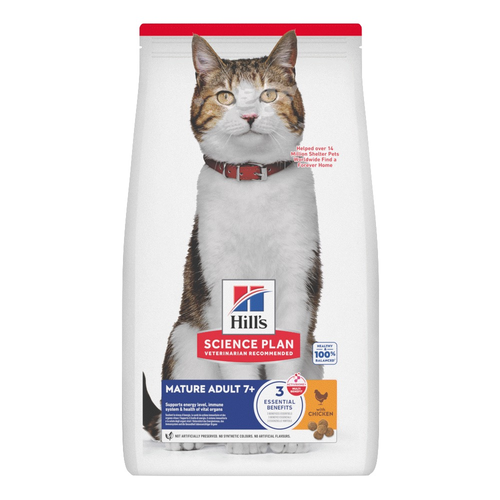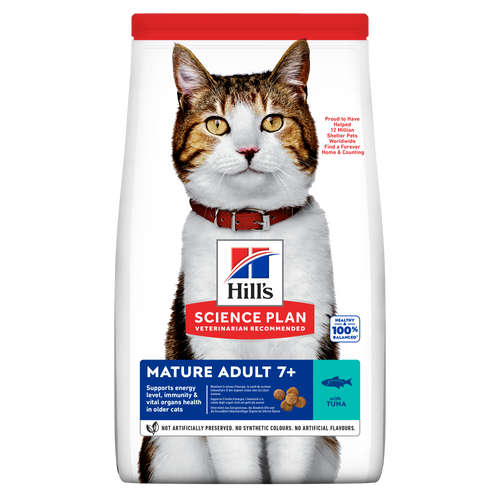
-
Featured products
 Small & Mini Adult Dog Food
Small & Mini Adult Dog FoodHill's Science Plan Small & Mini Breed Adult Dog Food with Lamb & Rice is a complete pet food, specially formulated with ActivBiome+ Multi-Benefit Technology.
Tailored nutrition for the unique needs of small dogs during the prime of their life.Shop Now Small & Mini Puppy Food
Small & Mini Puppy FoodHill's Science Plan Puppy Small & Mini Breed Dog Food with Chicken is a complete pet food, specially formulated with ActivBiome+ Multi-Benefit Technology.
100% balanced nutrition to support optimal growth & the immune system.Shop Now Small & Mini Mature Adult Dog Food
Small & Mini Mature Adult Dog FoodHill's Science Plan Small & Mini Breed Mature Adult Dog Food with Chicken is a complete pet food, specially formulated with ActivBiome+ Multi-Benefit Technology.
Tailored nutrition to support graceful ageing in small dogs. Specially made with a synergistic blend of nutrients for energy & vigor.Shop NowFeatured products Mature Adult Cat Food
Mature Adult Cat FoodHill's Science Plan Mature Adult Cat Food with Chicken is a complete pet food, specially formulated with ActivBiome+ Multi-Benefit Technology.
This food supports graceful aging in cats, providing a synergistic ingredient blend to help support energy & activity levels.Shop Now Oral Care Adult Cat Food
Oral Care Adult Cat FoodHill's Science Plan Oral Care Adult Cat Food with Chicken contains clinically proven kibble technology to reduce plaque & tartar build up.
Shop Now Mature Adult 7+ Cat Food
Mature Adult 7+ Cat FoodHill's Science Plan Mature Adult Cat Food with Salmon is a complete pet food, specially formulated with ActivBiome+ Multi-Benefit Technology.
This food supports graceful aging in cats, providing a synergistic ingredient blend to help support energy & activity levels.Shop Now -
Dog
- Dog Tips & Articles
-
Health Category
- Weight
- Food & Environmental Sensitivities
- Urinary
- Digestive
- Joint
- Kidney
-
Life Stage
- Adult Nutrition
Cat- Cat Tips & Articles
-
Health Category
- Weight
- Skin & Food Sensitivities
- Urinary
- Digestive
- Kidney
-
Life Stage
- Kitten Nutrition
- Adult Nutrition
Featured articles Proteins
ProteinsTo make a protein, amino acids are linked together in a long chain. The chain is then bundled into to a three-dimensional structure, like a tangled ball of yarn.
Read More The Incredible Science Behind Your Pet's Microbiome
The Incredible Science Behind Your Pet's MicrobiomeLearn what your pet's microbiome is, how it contributes to your pet's gut and overall health, and why nutrition is important in maintaining healthy microbiomes.
Read More The Right Diet For Your Pet
The Right Diet For Your PetIn people, the right diet is very important. If you are eating the wrong way for your metabolism, activity level, age and lifestyle you could end up with health issues.
Read More -


When you adopt a cat, you don't just gain a best friend; you could also be saving their life. With so many wonderful felines to choose from, getting a cat from an animal shelter makes so much sense.
Are Shelter Cats Problem Cats?
Not even close! A cat often ends up at animal shelters through no fault of their own. In fact, the most common reasons involve their former parents. They may be moving to a new home where a cat isn't allowed or going through lifestyle changes, such as a new baby or a spouse who is allergic to cats. Illness or passing of a pet parent is another unfortunate reason why a cat may end up in a shelter.
Most of the time, it's through simply unlucky circumstances. Whatever the case, most shelters gladly reveal the reason why a particular cat is up for adoption and can give advice on how to best integrate a potential pet into your home.
Why Adopt from a Shelter?
Cats in need of a new home are often the perfect choice for first-time pet parents. Most of these cats have already lived inside, and therefore know the routines of a household. Animal shelters provide a wide range of cats to choose from, allowing you to find a shorthair, tabby cat, male, female—whatever attributes your heart desires.
Many shelters also take note of the temperament of resident cats and keep a record of information for owner-surrendered animals. They then use this information to help you find your best match. Knowing what to expect, or at least what a given cat has been exposed to in the past, is another great benefit of adopting an adult cat from an animal shelter.
Healthy but Curious
When looking for a great cat at your local animal shelter, a healthy cat should be your number-one priority. Healthy cats have clear eyes and noses without excessive sneezing, coughing, or mucous discharges in otherwise clean environments. Their coats should look groomed and generally free of mats, too. Don't let this ideal keep you from falling for a curious cat, though! A cat with this sense of adventure is one who may adjust more easily to living with your family e.g. they are daring enough to approach the end of the cage and interact with you.


Tasty Tips
The Adoption Process
Each shelter has a different process for adopting cats, so check the organisation's website (or call them) before you go. The following steps are pretty common parts of the process:
- Private shelters often require forms that include a vet's name, phone number, and references. Look for a local vet even before you contact the shelter so you have this information on hand.
- All available cats are advertised online or on the shelter's website. If you see one you like, call ahead to make sure they are still there.
- Make an appointment to visit the shelter and meet the cat.
- Bring your driver's license or similar proof of address.
- Some shelters offer a simple cardboard carrier so that you can bring your kitty home, but if you have your own cat carrier bring it along. Cats should ride in a sturdy carrier so they don't get hurt or feel the need to escape.
- Some shelters request a twenty-four hour waiting period, so you may not be able to bring them home right away. Keep in mind that this gives you time to think about your decision, and gives the shelter time to conduct a background check that confirms you're the reliable owner you know you are.
- You may be asked to complete an adoption contract, which stipulates the conditions under which you can keep your cat. For example, you'll be required to have the cat spayed or neutered, and keep up-to-date with vaccinations. You may also be asked to bring your cat back to the shelter if you need to re-home them for any reason.
- Finally, bring your cat home. Have a litter box, food, and water bowl set up in just one room; it's helpful to keep them contained to one space of the house for the first day or two until they get used to the environment. Provide plenty of toys and places to hide, such as a cardboard box or soft-sided sleeping cube.
Know the Costs Beforehand
Getting a cat is a lifetime commitment. As a parent and guardian, you'll be responsible for their well-being for the rest of their life. Knowing the costs and time commitments for cat ownership is an important part of the adoption process.
The Day-to-Day
Don't forget a litter box, bowls, and toys. A brush is also helpful to keep your cat’s coat clean.
Good-quality cat food is high in nutrients and low in fillers. Cat foods such as Hill’s Science Plan are available at specialty pet retailers.
What about a time commitment? You don't need to walk your cat, but you should look forward to spending quality time each day with your adorable friend. Grooming, brushing, feeding, and simply enjoying your time together is essential to creating that special bond with your newest family member.
Cats offer companionship, affection, and enjoyment—and ask so little in return. So, adopt a cat. As they say, this could be the start of a beautiful friendship.


One of our staff authors prepared this article for you
Related products

Hill's Science Plan Mature Adult Cat Food with Salmon is a complete pet food, specially formulated with ActivBiome+ Multi-Benefit Technology.
This food supports graceful aging in cats, providing a synergistic ingredient blend to help support energy & activity levels.

Hill's Science Plan Mature Adult Cat Food with Chicken is a complete pet food, specially formulated with ActivBiome+ Multi-Benefit Technology.
This food supports graceful aging in cats, providing a synergistic ingredient blend to help support energy & activity levels.

Hill's Science Plan Perfect Weight Adult Cat Food with Chicken is clinically proven nutrition to reach & maintain healthy weight.

Hill's Science Plan Oral Care Adult Cat Food with Chicken contains clinically proven kibble technology to reduce plaque & tartar build up.
Related articles

Good nutrition is about the right balance of nutrients. Learn more about health issues when feeding a cat food that has an improper nutritional balance from your friends at Hills Pet Nutrition.

When learning how to train your cat, you'll start with very basic first steps that both reward good behavior and discourage the bad.

HillsPet Nutrition provides information on proper nutrition, fitness and special needs in keeping your cat healthy and happy.

Find the right Hill

Put your cat on a diet without them knowing
Our low calorie formula helps you control your cat's weight. It's packed with high-quality protein for building lean muscles, and made with purposeful ingredients for a flavorful, nutritious meal. Clinically proven antioxidants, Vitamin C+E, help promote a healthy immune system.
Put your cat on a diet without them knowing
Our low calorie formula helps you control your cat's weight. It's packed with high-quality protein for building lean muscles, and made with purposeful ingredients for a flavorful, nutritious meal. Clinically proven antioxidants, Vitamin C+E, help promote a healthy immune system.

